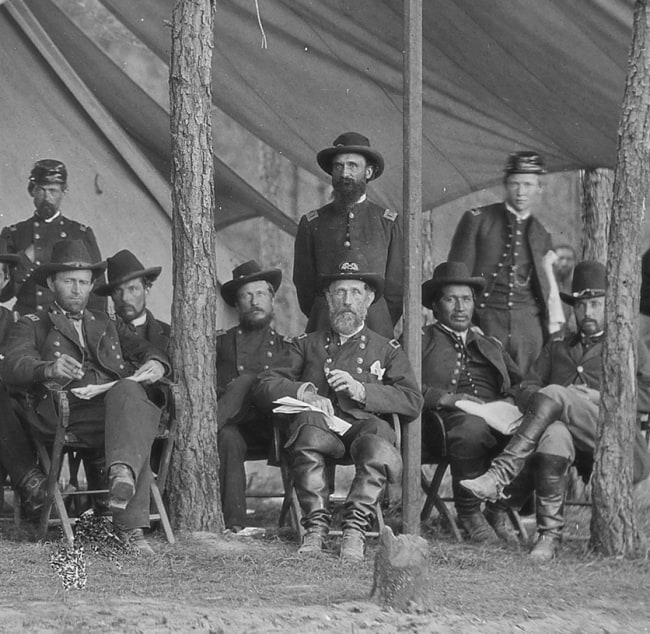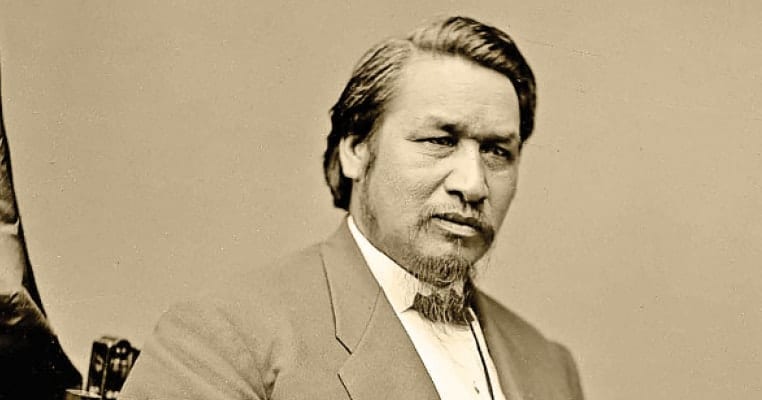Ely S. Parker was a Seneca leader who had a hand in ending the American Civil War. In fact, Parker drafted the Confederate surrender documents with his own handwriting. Both Lee and Grant signed the official paperwork at Appomattox. Also known as Donehogawa, Parker, a member of the Iriquois tribe, played an influential role in the treaty between the north and the south.
Parker was born Hasanoanda in 1828 on the then-called Tonawanda Reservation at Indian Falls, New York. He was born into a Seneca family and showed great potential from his childhood. Hasanoanda was given the name Ely S. Parker when he was baptized. Parker’s father was a Baptist minister and believed that all his children needed the most exceptional teaching possible. Therefore, Parker received an education at a missionary school and learned to speak two languages, Seneca and English. After he completed his classes at the missionary school, Parker went off to college.
Excelling in college was only a small portion of the significant accomplishments Parker would make during his lifetime. He quickly became a “go to” man for the Seneca, which is one of the Six Nations of the Iroquois Confederacy. However, all of Parker’s accomplishments would not be met without struggles and discrimination.
Above everything Parker accomplished, one of the most prominent facts was that he was indeed a Native American during the 19th century; this notion meant that according to some laws, Parker was not considered a real American civilian. However, the fact that Parker did not let this discrimination deter his determination throughout his life only makes him a bigger hero in American history.

Parker’s Education Expands
In a time where Native Americans were being placed in Reservations, Parker, his parents, and his siblings were living in a home where education was growing faster than the times. One of the most significant ways that this occurred in Parker’s home was his family opened the doors for non-Native American educators who were interested in expanding their education themselves. Some of these people Parker met included John Wesley Powell, Lewis Henry Morgan, and Henry Rowe Schoolcraft. While they discussed a variety of topics, one of the hot discussions was the study of human biological and physiological characteristics and their evolution. It was through this group that anthropology was formed as a discipline.
When Parker left the missionary school, he started working in an Ellicottville, New York law firm with the hopes of one day being a lawyer. Like many young lawyers at the time, Parker would study law while he was doing anything he could to gain hands-on experience in the legal firm. Unfortunately, Parker would hit a roadblock when he applied to take the bar examination. Parker was rejected from being able to test because he was Native American. At the time, and until the Indian Citizenship Act of 1924, Senecas were not considered United States citizens. Since Parker was not considered an American citizen, he was not allowed to take the bar examination anywhere in the United States.

A Friendship Grows
Lewis Henry Morgan, who was also one of the men who studied at the Parker home, started to become fast friends with Parker during the 1840s. Morgan, who was a lawyer, was interested in the creating better laws and situations for the Native Americans.
On top of this, Morgan was in the process of establishing The Grand Order of the Iroquois. Parker felt this was a great opportunity and became Morgan’s primary source of information for his research and work. In return, Morgan helped Parker create connections in society, which is one way Parker was able to fulfill a majority of his accomplishments.

